The AMD Radeon R9 295X2 Review
by Ryan Smith on April 8, 2014 8:00 AM EST- Posted in
- GPUs
- AMD
- Radeon
- Radeon 200
Meet the Radeon R9 295X2: Cooling & Power Delivery
Kicking off our look at the R9 295X2’s features and build quality, as we alluded to in our introduction the R9 295X2 is a card of many firsts for AMD. It is the first 500W card for the company, it is the first luxury class video card for the company, and it is of course the first reference card with a closed loop liquid cooler And since the elephant in the room is that CLLC, let’s start our review with that.
Liquid cooling for GPUs is in and of itself not a new concept. Self-builders and boutique builders have been using self-assembled (open loop) liquid cooling assemblies on GPUs for years, as GPUs have exceeded CPUs for heat generation for some time now. However it’s only within the last few years that closed loop liquid coolers have come into the mainstream, and still more recent yet since board manufacturers started using CLLCs in their base designs as opposed to an aftermarket modification.
The first notable card to ship with a CLLC was Asus’s ROG ARES II, a high end boutique design that put two 7970GEs on a single board. The ARES brand is used for Asus’s custom designed cutting edge video cards, both of which have been dual-GPU cards in the same vein as today’s R9 295X2. At the time Asus needed to move around 500W (just like AMD today) and so they used an interesting dual cooler design that combined a split blower with a CLLC, allowing for both the GPUs and the associated discrete components to be effectively cooled in spite of the immense heat. The end result was a rare (1000pc) card that served as a proof of concept for the retail CLLC design, and at least to some extent the market for such a design.
It’s this design that AMD is clearly taking a hint or two from in building the R9 295X2. Like Asus’s design, AMD is essentially punting on cooling the GPUs directly, moving to a split design that uses both direct and indirect cooling.
For GPU cooling AMD has teamed up with Asetek to utilize their collection of CLLC parts to build out the R9 295X2. Each GPU is outfit with one of Asetek’s higher end copper-based pumps, which operate together in a serial design. At the other end of the loop is one of Asetek’s 120mm radiators – we haven’t been able to identify the specific radiator, but at 38mm thick it’s somewhere in between Asetek’s standard (single) thickness and double-thick radiators. Sending air through the radiator in turn is a single 120mm fan in a push configuration. With the bulk of the heat generated by the R9 295X2 coming from the GPUs, the bulk of the heat exhaustion in turn is handled by this radiator setup.
Ultimately the use of a CLLC is what’s key to making the R9 295X2 a viable and acoustically practical product. While it’s plenty possible to build a triple slot open air cooler, as exemplified by products such as the PowerColor custom 7990, those products end up being especially large even by video card standards, and noise is often an ongoing concern. By going with a separate radiator and using liquid cooling to attach it to the GPUs, AMD is able to use a heatsink with a much larger surface area and a large, slow case fan to move air as opposed to having to operate a smaller fan at higher (i.e. louder) speeds, as we saw with the Radeon HD 6990. At the end of the day the PCI-Express form factor imposes certain limits on cooler design by virtue of its shape and overall size of I/O slots, so AMD has forgone PCI-Express entirely by utilizing an external radiator.
Meanwhile a secondary split-blower design provides cooling for the discrete components on the board itself, including the various VRMs and the RAM. AMD utilizes a metal baseplate and secondary copper heatsink over the PCB to channel heat out of those smaller components, with grooves in the baseplate directing the airflow. The use of this split design with a radiator and a split-blower allows AMD to use a CLLC for the GPUs while resolving the biggest roadblock in aftermarket CLLC GPU cooling, which is cooling those discrete components. The end result is a cooling setup that is almost (but not quite) a fully exhausting cooler. All of the GPU heat and half of the discrete component heat is exhausted outside of the case, leaving only a small amount of heat from the other half of the discrete components to be cycled back into the case.
On that note, as can be expected from the inclusion of a CLLC, the R9 295X2’s mounting requirements will have a significant impact on its case compatibility. Installing the R9 295X2 will require an easily accessible 120mm fan exhaust mount, something that’s available in many cases, but not all of them. Our own testbed has a 120mm/140mm mount directly above the GPU which we’re using for our testing, but this is something we can get away with because our 2x140mm CPU CLLC is mounted at the top of the case. Mounting a CPU CLLC and an R9 295X2 will likely tap all of the available mounts available in mid-tower cases, so going for a dual R9 295X2 setup can be assumed to require a full tower ATX case to come up with enough mounting points.
Moving on, beyond the cooler we have the board itself. At 12 inches long the R9 295X2 is the same length as the 7990 and the 6990, so radiator aside it fits in the same space as AMD’s previous dual-GPU cards. Also unchanged compared to past AMD designs, and unlike Asus’s earlier CLLC card, the R9 295X2 is also a standard height card. Some additional clearance is required for the CLLC hoses, but the board and the shroud itself do not protrude any, making it a bit easier to install the card.
Removing the pump and heatsink assembly exposes the board itself, which utilizes a fairly typical layout for a dual-GPU design. The two Hawaii GPUs sit at opposite ends of the board, with each GPU surrounded by its 4GB of VRAM. For each GPU 8 chips are on the front of the board while the other 8 chips are on the back. Meanwhile the various VRM components lie at the center of the card (explaining the earlier secondary copper heatsink), and to the left of that a PLX 48 lane PCIe switch.
The PCB itself is 14 layers, making it an especially intricate PCB, but one necessary to carry 500W while also routing 1024 GDDR5 lines and 48 PCIe 3 lanes. For power delivery and regulation AMD is using a 4+1+1 design for each GPU, which breaks down to 4 power phases for the GPU, one power phase for the memory interface, and one power phase for the memory itself. This 4+1+1 setup is functional for AMD’s needs at stock settings, but between the CLLC and the power delivery system it’s clear that AMD hasn’t built this board for extreme overclocking.
Speaking of power delivery, let’s talk about the 2 8pin PCIe power sockets that are found at the top right side of the card. For those of our readers who can quote PCIe specifications by heart, the standard limit for an 8pin PCIe socket is 150W, which in this configuration would mean that the R9 295X2 has a 375W (150+150+75) power delivery system. By PCIe standards this has the board coming up short, but as we found out back in 2011 with the launch of the 6990, when it comes to these high end specialty cards PCIe compliance no longer matters. In the case of the 6990 and now the R9 295X2, AMD is essentially designing to the capabilities of the hardware rather than the PCIe specification, and the PCI-SIG for their part is not an enforcement body. Other than likely not being able to get their card validated as PCI-Express compliant and therefore included on the Systems Integrator List, AMD isn’t penalized for exceeding the PCIe power delivery standard.
So why does the 500W R9 295X2 only have 2 PCIe power sockets? As it turns out this is an intentional decision by AMD to improve the card’s compatibility. Dual dual-GPU (Quadfire) setups are especially popular with boutique builders and their customers, and very few PSUs offer more than 4 8pin PCIe power plugs. As a result, by using just 2 power sockets the R9 295X2 is compatible with a wider range of PSUs when being used in Quadfire setups. Meanwhile on the power delivery side of the equation, most (if not all) of the PSUs that can reliably push the necessary wattage to support one or two R9 295X2s have no problem delivering the roughly 220W per socket that the card requires. Which is why at the end of the day AMD can even do this, because the PSUs in the market today can handle it.
Speaking of power, it’s worth pointing out that AMD’s official system requirements for the R9 295X2 call for a PSU that can deliver 28A per 8pin PCIe power connector, with a combined amperage of 50A. For most PSUs this means you’re looking at an 800W PSU being required for a single card, and a 1500W PSU for a Quadfire setup.
Meanwhile our final stop on our tour of the R9 295X’s PCB is the I/O connectivity. Here AMD is using the same setup as they used for the 7990, with 4 mini-DisplayPort connectors and a single DL-DVI-D connector sharing the bottom row of the I/O bracket, while the top of the bracket is dedicated to exhausting hot air. With a single R9 290X already capable of driving most games at high settings on single-display (2560x1600/1440) resolutions, the R9 295X2 is primarily targeted towards users who are either using 4K displays or using Eyefinity setups, either of which is best matched with DisplayPorts rather than additional DVI/HDMI ports. As always these are dual-mode ports, so they can easily be converted to HDMI and DVI if the need arises.


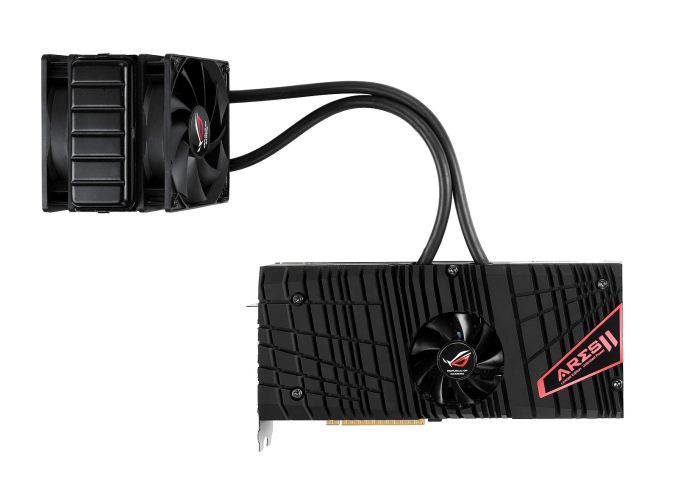
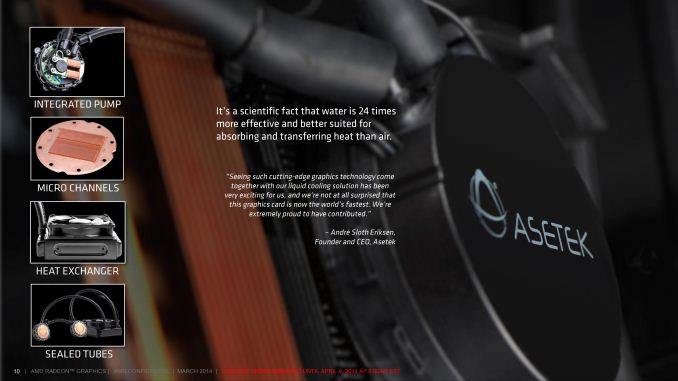
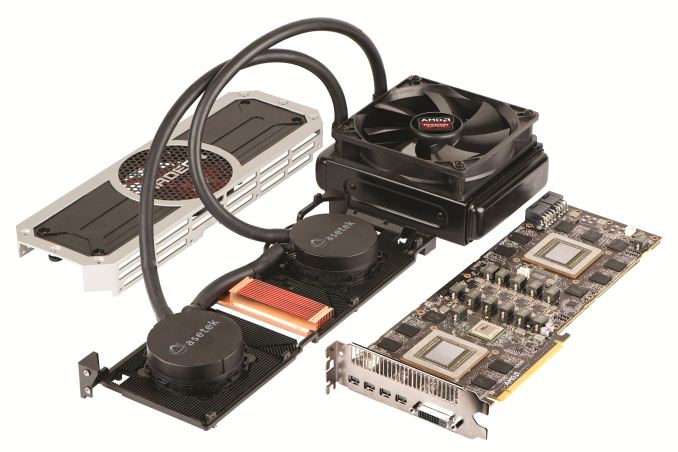
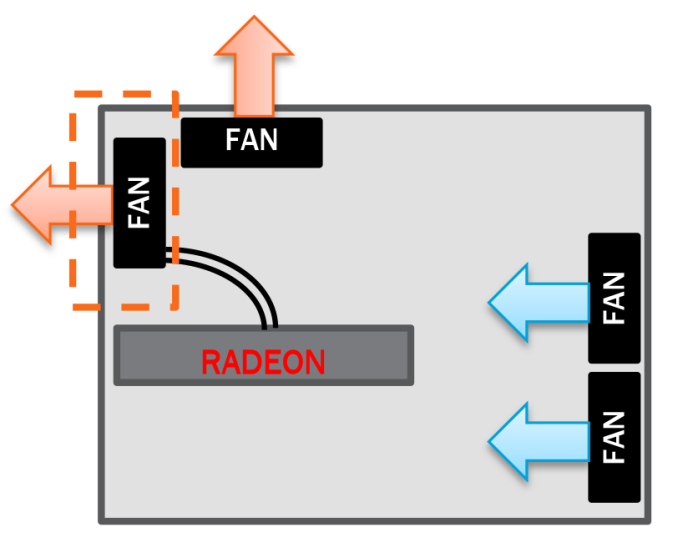
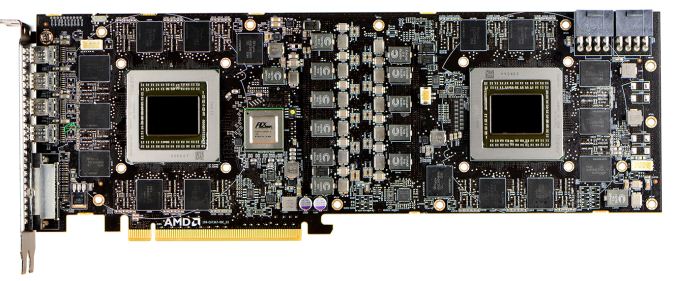








131 Comments
View All Comments
HalloweenJack - Tuesday, April 8, 2014 - link
cheaper set of 780ti`s? 2 of them is $1300 > $1400 and the 295 isn't even in retail yet....anandtech going to slate the Titan Z as much? or is the pay cheques worth too much. shame to see the bias , anandtech used to be a good site before it sold out.
GreenOrbs - Tuesday, April 8, 2014 - link
Not seeing the bias--Anandtech is usually pretty fair. I think you have overlooked the fact that AMD is a sponsor not NVIDA. If anything "slating" Titan Z would be more consistent of your theory of "selling out."nathanddrews - Tuesday, April 8, 2014 - link
What bias?http://www.anandtech.com/bench/product/1187?vs=107...
Two 780ti cards are cheaper than the 295x2, that's a fact.
Two 780ti cards consume much less power than the 295x2, that's a fact.
Two 780ti cards have better frame latency than the 295x2, that's a fact.
Two 780ti cards have nearly identical performance to the 295x2, that's a fact.
If someone was trying to decide between them, I'd recommend dual 780ti cards to save money and get similar performance. However, if that person only had a dual-slot available, it would be the 295x2 hands-down.
The Titan Z isn't really any competition here - the 790 (790ti?) will be the 295x2's real competition. The real question is will NVIDIA price it less than or more than the 295x2?
PEJUman - Tuesday, April 8, 2014 - link
I don't think the target market for this stuff (295x2 or Titan Z) are single GPU slots, as Ryan briefly mentioned, most people who are quite poor (myself included), will go with 780TI x 2 or 290x x 2, These cards are aimed at Quads.AMD have priced it appropriately, roughly equal perf. potential for 3k dual 295x2 vs 6k for dual titan-z. Unfortunately, 4GB may not be enough for Quads...
I've ventured into multiGPUs in the past, I find these rely too much on driver updates (see how poorly 7990 runs nowadays, and AMD will be concentrating their resource on 295x2). Never again.
Earballs - Wednesday, April 9, 2014 - link
With respect, any decision on what to buy should made but what your application is. Paper facts are worthless when they don't hold up to (your version of) real world tasks. Personally I've been searching for a good single card to make up for Titanfall's flaws with CF/SLI. Point is, be careful with your recommendations if they're based on facts. ;)Sidenote: I managed to pick up a used 290x for MSRP with the intention of adding another one once CF is fixed with Titanfall. That price:performance, which can be had today, skews the results of this round-up quite a bit IMO.
MisterIt - Tuesday, April 8, 2014 - link
By drawing that much power from the PCI-lane, won't it be a fire hassard? I'v read multiple post about motherboard which take fire at bitcoin/scryptcoin mining forums due to using to many GPU without using a power riser to lower the amount of power delivered trought the pci-lane.Would Anandtech be willing to test the claim from AMD by running the GPU at full load for a longer period of time under a fire controlled environment?
Ryan Smith - Tuesday, April 8, 2014 - link
The extra power is designed to be drawn off of the external power sockets, not the PCIe slot itself. It's roughly 215W + 215W + 75W, keeping the PCIe slot below its 75W limit.MisterIt - Tuesday, April 8, 2014 - link
Hmm allright, thanks for the reply.Still rather skeptical, but I'll guess there should be plenty of users reviews before the time i'm considering to upgrade my own GPU anyways.
CiccioB - Tuesday, April 8, 2014 - link
Don't 8-pin molex connector specifics indicate 150W max power draw? 215W are quite out of that limit.Ryan Smith - Tuesday, April 8, 2014 - link
Yes, but it's a bit more complex than that: http://www.anandtech.com/show/4209/amds-radeon-hd-...